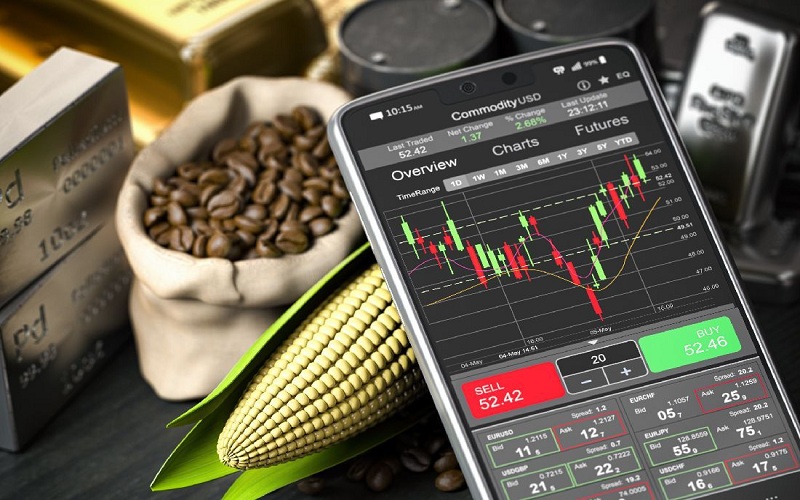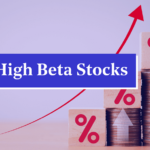In the dynamic world of financial markets, commodity CFDs (Contract for Difference) offer traders a gateway to the exciting realm of commodity trading without owning the underlying assets. To trade commodity CFDs in a safe manner, you will need a solid understanding and effective strategies. This article aims to provide comprehensive guidance for beginners, covering essential tips and strategies to embark on a successful journey in commodity CFD trading.

Understanding Commodity CFDs
Commodity CFDs are financial derivatives that allow traders to speculate on the price movements of various commodities, including precious metals (gold, silver), energy resources (crude oil, natural gas), agricultural products (wheat, corn), and more. Unlike traditional trading, where investors buy and sell physical commodities, CFD trading enables traders to profit from price fluctuations without owning the underlying assets.
Key characteristics of commodity CFDs include leverage, which amplifies both potential profits and losses, and the ability to trade on margin, allowing traders to control larger positions with a smaller amount of capital. While commodity CFDs offer opportunities for significant returns, they also entail risks, including market volatility, overnight financing charges, and the potential for rapid losses.
Not only is understanding the fundamentals of commodity marketscrucial for successful trading but also closely monitoring their prices. For instance, what is the price of silver today and what price did silver have in the past are some of the questions that traders interested in silver CFDs should explore.
Essential Tips for Beginners
Before diving into commodity CFD trading, it is crucial to gain a solid understanding of the commodity markets. Familiarise yourself with the factors influencing commodity prices, such as supply and demand dynamics, geopolitical events, economic indicators, and seasonal trends. Resources such as financial news websites, educational articles, and online courses can be invaluable in building your knowledge base.
Selecting a reputable and regulated broker is essential for a safe and reliable trading experience. Look for brokers with a proven track record, transparent fee structures, competitive spreads, and a user-friendly trading platform. Additionally, ensure that the broker offers a wide range of commodity CFDs to trade, providing you with ample opportunities to diversify your portfolio.
Before risking real capital, consider practising your trading strategies with a demo account provided by your broker. Demo accounts allow you to trade with virtual money in real market conditions, providing a risk-free environment to test different trading approaches and familiarise yourself with the trading platform. Use this opportunity to hone your skills and gain confidence before transitioning to live trading.
Fundamental Analysis Strategies
Fundamental analysis involves evaluating the underlying factors driving supply and demand for commodities. Factors such as changes in global production, consumption patterns, geopolitical tensions, and economic growth can influence commodity prices. By analysing supply and demand fundamentals, traders can identify potential trading opportunities and anticipate price movements.
Economic indicators, such as gross domestic product (GDP), inflation rates, and employment data, can provide insights into the health of the economy and its impact on commodity demand. For instance, strong economic growth may drive demand for industrial commodities like copper, while rising inflation could boost demand for precious metals like gold as a hedge against inflation. Monitor vital economic indicators to gauge the overall economic outlook and its implications for commodity markets.
Technical Analysis Strategies
Technical analysis involves analysing historical price data and market statistics to forecast future price movements. Traders use various technical indicators, chart patterns, and statistical tools to identify trends, support and resistance levels, and potential entry and exit points. Technical analysis can be instrumental in commodity CFD trading, where price movements are driven by market sentiment and investor behaviour.
Chart patterns, such as trendlines, channels, and chart formations like triangles and head and shoulders patterns, can provide valuable insights into market trends and potential reversal points. By identifying and analysing chart patterns, traders can anticipate price movements and make informed trading decisions. Additionally, combining chart patterns with other technical indicators can enhance the effectiveness of your analysis.
Advanced Strategies for Experienced Traders
Spread trading involves simultaneously buying and selling related commodities or contracts to capitalise on price differentials or spreads. This strategy aims to profit from the price convergence or divergence between two correlated assets, such as different grades of crude oil or related commodity futures contracts. Spread trading requires a deep understanding of market relationships and can be an effective way to mitigate risk and enhance profitability.
Hedging involves using derivative instruments, such as futures contracts or options, to offset the risk of adverse price movements in the underlying commodity. Traders can hedge their exposure to commodity price fluctuations by taking offsetting positions in the futures or options market, thereby protecting their portfolios against potential losses. Hedging strategies are commonly employed by commodity producers, consumers, and speculators to manage risk effectively.
Conclusion
Navigating the complexities of commodity CFD trading requires a combination of knowledge, skill, and discipline. By understanding the fundamentals of commodity markets, implementing effective trading strategies, and avoiding common pitfalls, traders can enhance their chances of success and achieve their financial goals. Whether you are a novice trader, or an experienced investor, continuous learning, adaptability, and prudent risk management are essential keys to thriving in the dynamic world of commodity CFDs. Embark on your trading journey with confidence, armed with the vital tips and strategies outlined in this article, and seize the opportunities that commodities CFDs have to offer.






Leave a Reply